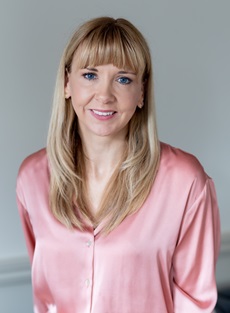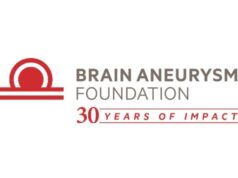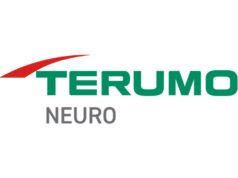
Intracranial aneurysms are a largely underestimated condition, for which global awareness and clinical research are currently lacking—and these sentiments apply even more pertinently when it comes to hereditary brain aneurysms. For NeuroNews, Rebecca Middleton (Leicester, UK) discusses how her own diagnosis led to the inception of Hereditary Brain Aneurysm (HBA) Support, and outlines the organisation’s achievements to date as well as future goals.
In the winter of 2015, my life took an unforeseen turn when I received a life-altering diagnosis: a brain aneurysm coupled with familial intracranial aneurysm syndrome. This moment signalled the onset of a journey marked by uncertainty and an enormous desire for understanding. Every patient seeks solace in a community of understanding. But, despite the gravity of my condition—one that had claimed the lives of my mother, grandmother and others in my family—I grappled with the realities of the diagnosis alone, with little specialist support.
However, as vice chair for rare conditions on the participant panel at Genomics England, I understood I was unlikely to be truly alone and that there would be hundreds of families living with the complexities of hereditary brain aneurysms. Knowing this spurred me to launch HBA Support in 2022. We’re now a growing and busy patient organisation with a clear mission to build a community of people who share experience and insight, supporting families and together advancing our understanding of the condition as a genetic, life-changing disease.
What is a hereditary brain aneurysm?
A hereditary brain aneurysm refers to a specific type of intracranial aneurysm that exhibits a familial clustering pattern within families. Unlike sporadic cases, where aneurysms occur due to environmental or other risk factors, hereditary brain aneurysms are characterised by a genetic predisposition that increases the likelihood of developing aneurysms among close relatives. Diagnosed individuals often have a confirmed family history of the condition, indicating a genetic component. This clustering of aneurysms within families can pose unique challenges in diagnosis, management and treatment.
One of the distinguishing features of hereditary brain aneurysms is their heightened risk of rupture, which can lead to potentially severe consequences. Research suggests that a person with a strong family history of intracranial aneurysms is up to three times more likely to have the condition compared to someone in the general population. This increased risk underscores the importance of early detection, vigilant monitoring and tailored treatment strategies for individuals and families affected by hereditary brain aneurysms.
Targeted literature review
To drive a better understanding and help unravel the mysteries surrounding the condition for all stakeholders but, in particular, patients and their families, HBA Support commissioned a targeted literature review (TLR), executed on a pro-bono basis by Costello Medical. Previously, families have had limited access to easy-to-understand resources on the condition. They have often found themselves trying to piece together information from multiple sources, which can be difficult to understand and navigate, and are often found behind paywalls.
The TLR unpacks the pattern and distribution of hereditary brain aneurysms, as well as their genetic causes, and the UK and global guidelines for diagnosis, management and treatment. It also highlights existing gaps in research and knowledge. While much remains to be interpreted and discovered about the genetic markers underlying hereditary brain aneurysms, ongoing research efforts offer hope for better understanding and management of this complex condition.
It is reported in the TLR that the global prevalence of unruptured intracranial aneurysms in individuals with a family history is 2.3–29.4%, compared to 0.02–8.8% in the general population—pointing to the need for more research, and an improved understanding of familial and general population patterns. The TLR also evidences an absence of comprehensive guidelines for the management and treatment of hereditary brain aneurysms, and underscores the need for tailored, evidence-based recommendations. By identifying areas for improvement, the TLR serves as a catalyst for collaboration, advocacy and progress. HBA Support has recently connected with the Risk of Aneurysm Rupture (ROAR) study, led by Diederik Bulters from Southampton University (Southampton, UK), and hopes this ambitious research will shed more light and fill the knowledge gaps identified in the TLR.
Patient support
At HBA Support, we’re dedicated to providing vital assistance to those living with hereditary brain aneurysms in a clear, understandable way. Our approach is simple: we listen, connect and empower. Our active and growing online community of around 400 people is supported by a part-time team of engagement and community specialists, and experienced and clinical volunteers.
During our first year, we launched a series of user-friendly patient guides, including ‘The science and the genetics behind hereditary brain aneurysms’, ‘How to talk to my family following a diagnosis’, and ‘An introduction to genetic counsellors’. So far, the guides—which were developed by UK National Health Service (NHS) genetic counselling associates—have been downloaded more than 400 times. We’ve also started hosting webinars with expert groups, such as the Brain Aneurysm Foundation in the USA as well as members of our patient and advisory panels, tackling key topics like familial risk factors and screening. And we’re not stopping there. Soon, we’ll be launching a peer-to-peer Facebook community to sit alongside our information page, providing a safe space where people can connect.
Stakeholder engagement and further progress
I had my growing aneurysm coiled and stented in 2018 after close monitoring for a number of years. I now undergo regular scans and continue to have my care from specialists at Queen’s Medical Centre (Nottingham, UK). In 2015, I also joined the world-first 100,000 Genomes Project, delivered by the NHS and Genomics England with the aim of whole-genome sequencing 100,000 babies. While I continue to wait for my own genetics diagnosis, the project did lead me to the participant panel at Genomics England in 2016, where I now sit as vice chair for rare conditions. It was here that I learnt the power of patient involvement, lived experience and collaboration, and built my skills as a patient advocate.
These skills and experience have led to HBA Support playing an active role in a number of networks aligned with our organisational values and goals. We’re proud members of Genetic Alliance, Eurordis, Gene People Partnership Network, and Neuro Alliance; we’re also an active member of Rare Disease Research Network, and work closely with the NHS Genomic Medicine Service and Genomics Education colleagues. We presented a poster at the Barts Research and Advanced Interventional Neuroradiology (BRAIN) conference (4–6 December 2023, London, UK) as well. With this experience and knowledge, we’re keen to collaborate further in brain aneurysm research, and are delighted to have two MSc genetic counselling students from Cardiff University (Cardiff, UK) working with us soon to look at the emotional and psychological impact of this disease.
In addition to offering further support to our community and continuing to play an active role in our membership organisations to aid policy development, we have a busy year ahead in terms of building awareness of our mission within rare disease and research communities. We recently visited the UK House of Commons for Rare Disease Day 2024 (29 February). We’ll also be speaking at the Economist’s Cell and Gene Therapy Summit in Brussels, Belgium in April; heading to Barcelona, Spain for the Eurordis Summer School in June; building our campaign ready for brain aneurysm awareness month in September; and planning our first fundraising event in Leicester, UK in October to bring all aspects of our community together.
A brighter future ahead
With a brain aneurysm comes fear and, often, loss. We’re keen to redress the balance by outlining the care options that offer hope and choice. My family was blighted with tragedy but, through screening and surgery, I now have some peace of mind and there is light in the darkness. For my family and for the whole community, we have a duty to balance the fear with accessible information, fact-based conversations, and informed pathways, ensuring an equitable and supported patient journey for all.
By actively engaging with patients, participating in collaborative research efforts, and advocating for improved screening and treatment guidelines, the medical and patient community can make a profound impact—providing hope and light in often dark and risk-filled journeys. Together, through collective action and unwavering dedication, we can drive positive change, improve patient outcomes and, ultimately, save lives.
Rebecca Middleton is the founder and chief executive officer of HBA Support. She is also a founding member of the participant panel at Genomics England, for which she is vice chair of rare conditions, and sits on the patient and public voice (PPV) panel for the East Genomic Medicine Service (Cambridge, UK).
The author declared no relevant disclosures.










